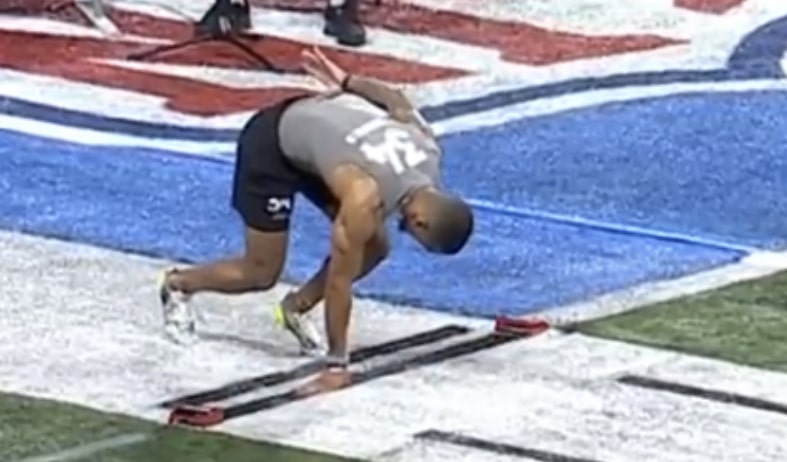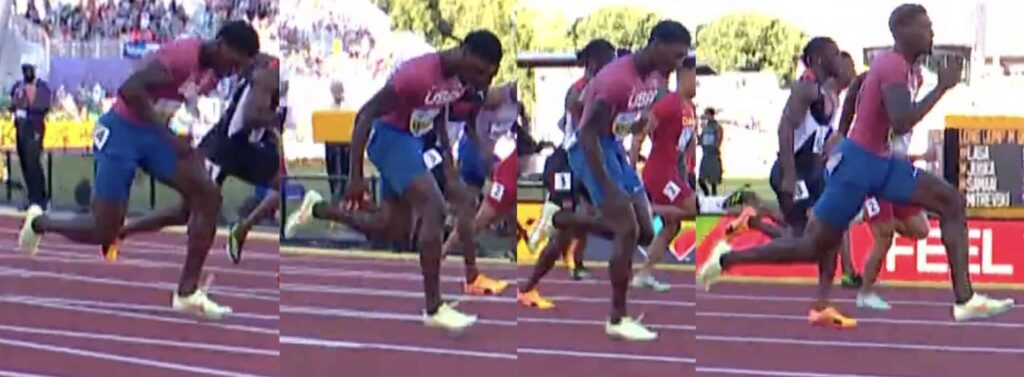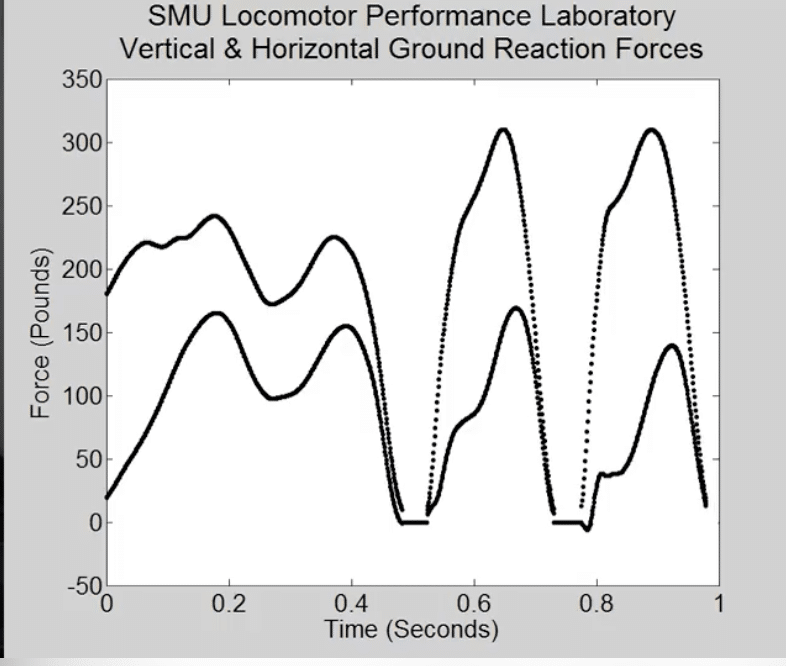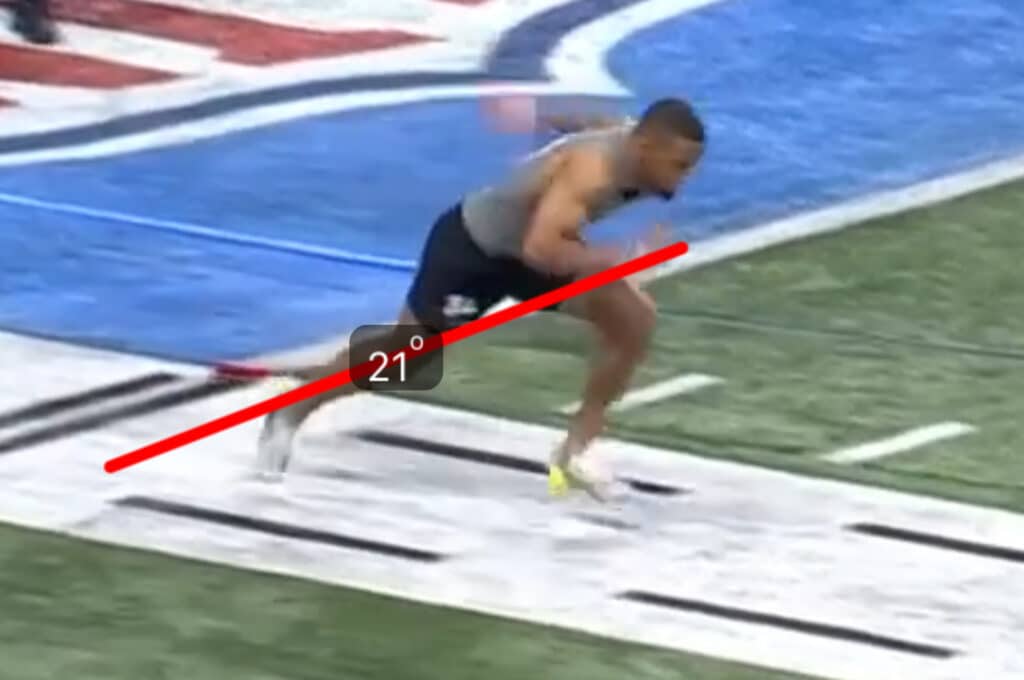How To Improve 40 Time
The 40-yard dash is a pivotal test of speed and explosiveness that is widely used to evaluate athletes in various sports, including football, track and field, and other competitive disciplines. In this article, we will delve into the intricacies of the 40-yard dash, exploring the essential components of the sprint and providing a detailed breakdown of each phase, from the initial setup to the drive phase and top-end speed. Furthermore, we will discuss the significance of the 40-yard dash in athletic performance assessment and highlight some of the fastest athletes and individuals to have ever completed the sprint.
The Setup And Initial Stance
The setup and initial starting stance are critical for a powerful and explosive start in the 40-yard dash. Here’s a breakdown of how to properly set up at the starting line when running the 40 yard dash:
Positioning: First thing, is to get your front foot positioned at the starting line, facing forward. Position your feet in a staggered stance, with one foot ahead of the other. Most of your weight should be on the front foot when set into your three point stance. There are a wide variety of different options that can be used in determining the distance the feet are from each other. I recommend to get some space from the starting line with the front foot so you can lean as far forward as possible.
Hand Placement: The hand placement for the three point stance should be slightly wider than the rear foot. Then the off hand wants to be back behind the hip. The first action when starting the 40 yard dash is to drive the back arm forward and through while simultaneously driving the knee forward in a straight line.

Head and Torso Position: There is a huge difference in the quality of of power during the first three steps depending on the position of the head and torso. Be sure the chin is tucked and the hips are above the back of the head when in the starting stance. The chin wants to stay tucked through the initial first step to prevent “popping up” or getting into an upright position too quickly.
Back Leg Position: Bend your rear leg at the knee and position it slightly behind the front leg and your body. Your rear foot should be on its toes, ready to explode forward during the start. Maintain a strong core tight and stable base by engaging your glutes and hamstrings.
Remember, each athlete may have slight variations in their three point stance depending on their body mechanics, flexibility, and personal preference. Experiment with different setups during practice sessions to find what works best for you.
Practicing your three-point stance is essential for improving your start in the 40-yard dash. Incorporate drills that emphasize explosive starts, such as practicing quick get-offs and reacting to auditory cues. Consistent repetition and attention to proper form will help you develop a strong foundation for a powerful and explosive start in the 40-yard dash.
Find Out More About Our Faster 40 Speed Program
The Drive Phase

Acceleration mechanics play a crucial role in improving your 40-yard dash time. The ability to generate explosive power and efficiently transfer that power into forward motion is essential during the initial stages of the sprint. In order to achieve an elite 40 yard dash time you must be able to accelerate quickly and efficiently.
The 40 yard dash is such a unique test because of how short of a period of time football players have to get to full speed. Most athletes at the NFL combine take between 19-21 steps from the starting line through the finish line. With such a small amount of steps, the drive phase becomes extremely important in order to reach top end speed.
Some great indicators for a great 40 time and effective drive phase are:
- Limited ground contact time
- Strong hip flexors with effective frontside mechanics
- Avoid an upright position until 20-25 yards
- Horizontal ground force much higher than body weight.

In order to improve your 40 yard dash time you have to get better acceleration mechanics. Some great places to look when it comes to acceleration are ground contact, shin angle at toe off and frontside mechanics.
When studying the best 40 yard dash times it is very clear they all do an excellent job of striking the ground with the foot right under the hip. A common mistake that football players make when accelerating is over reaching. Which is when you try to pick up too much distance with your front leg, leading to longer ground contact times. Proper acceleration mechanics show that in order to pick up better distance per step it actually comes from generating more force into the ground, not over reaching with the front foot.
The shin angle at toe off changes significantly from the first three steps in comparison to top-end speed. In the first three steps, most athletes take short strides because the focus in on building turnover speed, while at full speed the hips go through full range of motion in order to generate more force into the ground. The fastest athletes usually have a shin angle around 20 degrees during toe-off to fully maximize a horizontal trajectory when accelerating.

Maximizing Stride Distance
In order to run fast you have to be able to pick up the necessary distance per step given your height, force production, leg length, etc. While this may be different for everyone there are some important dynamics to consider when it comes to running fast.
Most importantly, you must land on the front part of your foot and maintain a strong stable foot/ankle complex in order to effectively toe off and gain the necessary distance in your stride. A common mistake that I see people make is, when landing they are not able to absorb the force in a way that keeps their weight forward. Therefore, the toe-off is on the outside of the foot or more towards the middle of the foot causing the foot to come upwards rather than forwards. Now the body is out of balance, out of position yet trying to accelerate.
This does not work and causes overuse injuries in the hamstrings, groin pulls and shin splints. Why? Because it is not functional. When running and accelerating it is critical that the body is in a position that assists the body to move forward and do so very quickly. This is why the angle of the shin and the position of the heel tells us so much about sprinting speed and acceleration.
Remember, perfecting acceleration mechanics takes practice and repetition. Incorporate drills that emphasize explosive starts, such as short sprints with a focus on proper form and technique. Video analysis can be helpful in identifying areas for improvement and refining your acceleration mechanics.
By paying attention to these three acceleration training mechanics and incorporating them into your training routine, you can optimize your 40-yard dash performance and shave valuable time off your sprint.
Top-End Speed:
Developing top speed is a crucial aspect of improving your 40-yard dash time. While acceleration gets you to your top speed, maintaining and maximizing that speed is equally important. Here are key strategies for developing top speed:
Proper Sprint Mechanics: Focus on optimizing your sprint mechanics to achieve efficient movement patterns at high speeds. Key elements include:
Maintaining an upright posture with a slight forward lean.
Striking the ground with a midfoot or forefoot landing.
Driving your knees, leaning forward, and extending your hips fully with each stride.
Maintaining a strong arm swing that drives backward and forward in sync with your leg movements.
Keeping your movements relaxed and fluid, avoiding unnecessary tension.
Stride Length and Frequency: Striking the right balance between stride length and frequency is crucial for top speed. As your speed increases, focus on:
Stride Length: Maintaining longer, powerful strides to cover more ground with maximal force behind each step.
Stride Frequency: Increasing your leg turnover rate to cycle your legs quickly and maintain a rapid rhythm.
Resistance Training: Incorporate resistance training exercises to enhance muscular power and speed development. Examples include:
Sled Sprints: Sprinting while pulling a sled or wearing a resistance harness.
Hill Sprints: Sprinting uphill to increase resistance and build leg strength.
Resistance Band Runs: Using resistance bands to add resistance to your sprints. These exercises help develop force production and improve stride power, which translates to increased top speed.
Overspeed Training: Incorporate overspeed training to improve your neuromuscular system’s ability to recruit muscles at higher speeds. This type of training includes:
Downhill Sprints: Running on a slight downhill slope to increase stride turnover and leg speed.
Assisted Sprints: Using a bungee cord or resistance band to provide a forward pull, helping you achieve faster leg turnover. Overspeed training can help your body adapt to faster speeds and improve your ability to maintain higher velocities.
Plyometric Exercises: Plyometric exercises can enhance explosive power and contribute to increased top speed. Incorporate exercises such as:
Bounds: Perform exaggerated running strides full speed, focusing on maximizing air time and power.
Depth Jumps: Step off a platform or box and explosively jump upward as soon as your feet touch the ground.
Single-Leg Hops: Perform explosive hops on one leg, focusing on maximum height and power. These exercises improve your ability to generate power and force quickly, which translates to increased top speed.
Sprint-Specific Drills: Include specific drills in your training routine that target top speed mechanics and efficiency. Examples include:
Flying Sprints: Accelerate to near-maximum speed and hold that speed for a short distance.
Split Runs: Sprinting at your maximum speed for shorter distances, with adequate rest intervals in between.
Speed Bounds: Perform exaggerated running strides, focusing on maintaining top-end speed and stride length. These drills help you focus on maintaining proper form and mechanics at higher speeds.
Training Strategies for Improving 40-Yard Dash Time
Strength training is a vital component of improving your 40-yard dash time. It helps enhance power, explosiveness, and overall athleticism, which are essential for achieving faster sprint times. Here’s a breakdown of key aspects of strength training for the 40-yard dash:
Compound Exercises: Incorporate compound exercises into your strength training routine. These exercises involve multiple muscle groups and joints, allowing you to develop functional strength and build explosive power together. Examples include squats, deadlifts, lunges, bench press, and overhead presses. These exercises target major muscle groups and contribute to overall body strength.
Lower Body Strength: Emphasize exercises that target your lower body, as this is where much of the power for sprinting is generated. In addition to compound movements like squats and deadlifts, include exercises such as hamstring curls, glute bridges, calf raises, and step-ups. Incorporating both bilateral (two legs) and unilateral (single leg) exercises can help address any muscular imbalances and enhance overall lower body strength.
Plyometric Training: Plyometric exercises are explosive movements that enhance power and quickness. They involve rapid muscle lengthening followed by a rapid contraction. Examples include box jumps, depth jumps, bounding, and medicine ball throws. Plyometrics can improve your ability to generate force quickly and enhance your sprinting performance.
Core and Hip Strength: A strong and stable core is crucial for sprinting efficiency and maintaining proper form. Incorporate exercises like planks, Russian twists, cable rotations, and medicine ball exercises to target your core muscles. Additionally, focus on hip strengthening exercises, such as hip thrusts, hip abductions, and lateral lunges. Strong hips contribute to better hip extension and overall power output during sprinting.
Speed-Strength Exercises: Speed-strength exercises combine strength and speed, helping you generate power quickly. Examples include power cleans, kettlebell swings, and explosive push-ups. These exercises improve your ability to apply force rapidly and enhance your explosiveness during acceleration and top-end speed.
Periodization: Employ a periodized training program that includes different phases to optimize your strength gains. This approach involves varying training intensity, volume, and exercises over time to prevent plateaus and continually challenge your body. Seek guidance from a qualified strength and conditioning coach to design a periodized program tailored to your specific needs.
Rest and Recovery: Allow sufficient rest and recovery between strength training sessions. This allows your muscles to repair and adapt to the training stimulus. Adequate sleep, nutrition, and hydration are also vital for optimal recovery and performance.
Remember, it is essential to perform strength training exercises with proper form and technique to minimize the risk of injury. If you’re new to strength training, consider working with a certified strength and conditioning specialist to ensure you’re using proper form and progressing safely.
By incorporating a well-rounded strength training program into your overall training routine, you can improve muscular power, explosiveness, and overall performance in the 40-yard dash. Strength training should be complemented by specific speed and agility training to optimize your sprinting abilities.
Fastest Performances in the 40-Yard Dash
The 40-yard dash is a widely recognized test of an athlete’ speed and acceleration at the NFL Combine. Over the years, several athletes have set impressive records with their remarkable 40-yard dash times. Here are some of the fastest recorded 40-yard dash times in NFL Combine history:
John Ross III – 4.22 seconds (2017): John Ross, a wide receiver from the University of Washington, set the current record for the fastest 40-yard dash time. He blazed through the distance in just 4.22 seconds, showcasing his incredible speed and acceleration.
Rondel Menendez – 4.24 seconds (1999): Rondel Menendez, a wide receiver from Eastern Kentucky University, set a blazing time of 4.24 seconds. His speed and quickness impressed scouts and earned him attention at the 1999 NFL Combine.
Chris Johnson – 4.24 seconds (2008): Chris Johnson, a running back from East Carolina University, matched Menendez’s record with a 4.24-second 40-yard dash time. Johnson went on to have a successful NFL career, known for his speed and agility.
Dri Archer – 4.26 seconds (2014): Dri Archer, a running back from Kent State University, recorded an impressive time of 4.26 seconds. His speed and explosiveness caught the attention of scouts during the 2014 NFL Combine.
Marquise Goodwin – 4.27 seconds (2013): Marquise Goodwin, a wide receiver and Olympic long jumper from the University of Texas, displayed his elite speed with a 4.27-second 40-yard dash time. Goodwin’s track background translated well to the football field.
Henry Ruggs III – 4.27 seconds (2020): Henry Ruggs III, a wide receiver from the University of Alabama, matched Goodwin’s time with a 4.27-second 40-yard dash. Ruggs showcased his exceptional speed and explosiveness, solidifying his status as a top prospect in the 2020 NFL Draft.
These athletes not only demonstrated exceptional speed but also leveraged their impressive 40-yard dash times to garner attention from NFL teams. It’s worth noting that while the 40-yard dash is a widely recognized metric most athletes, it’s important to evaluate players based on their overall athletic ability, football skills, and performance in game situations.
Why The 40 Yard Dash Is Important For Football Players
The fastest 40-yard dash times have become significant highlights of the NFL Combine, generating excitement and interest from fans and scouts alike. These exceptional performances showcase the incredible speed and athleticism that some athletes possess, propelling them to success at the professional level.
Stride frequency is a crucial aspect of sprinting, including the 40-yard dash. It refers to the number of strides or steps taken in a given time period, typically measured in steps per second or strides per minute. Increasing stride frequency can lead to improved speed and acceleration. Here’s a breakdown of how to optimize your stride frequency:
Quick Ground Contact: Aim for minimal ground contact time with each stride. The longer your foot stays on the ground, the slower your stride frequency becomes. Focus on pushing off the ground forcefully and efficiently as soon as your foot makes contact.
Leg Turnover: Leg turnover refers to how quickly you cycle your legs through the running motion. Work on developing a rapid and efficient leg turnover to increase stride frequency. Visualize a fast, circular motion with your legs, ensuring quick and snappy movements.
High Knee Lift: Emphasize a high knee lift during the sprint. Lifting your knees actively and forcefully helps shorten the time your foot spends on the ground and enables quicker leg turnover. Aim to bring your knee up to a height that is parallel to the ground or slightly higher.
Proper Arm Swing: Your arms play a vital role in determining stride frequency. Coordinate your arm swing with your leg movements. Maintain a 90-degree angle at the elbows and swing your arms forward and backward in a controlled and efficient manner. The arm swing should be rhythmic and synchronized with your stride frequency.
Plyometric Exercises: Incorporate plyometric exercises into your training routine. Plyometrics can improve your muscle power and elasticity, which directly impact stride frequency. Exercises such as bounding, skipping, and box jumps can help develop explosive leg strength and enhance your ability to cycle your legs quickly.
Cadence Drills: Perform drills specifically designed to improve stride frequency. One such drill is the “fast feet” drill, where you rapidly cycle your legs by taking quick and short steps in place. This drill helps train your neuromuscular system to increase your stride frequency.
Hill Sprints: Include hill sprints in your training regimen. Sprinting uphill naturally forces you to increase your stride frequency to overcome the incline. This type of training can help you develop the muscle memory and neuromuscular adaptations needed to maintain a high stride frequency on flat surfaces.
Remember to focus on quality over quantity. Rather than trying to take as many steps as possible, strive for efficient and powerful strides. Consistent practice and incorporating these techniques into your training routine will help you develop a higher stride frequency, leading to improved speed and performance in the 40-yard dash.
Remember, it’s crucial to gradually build up to top speed training to prevent injuries. Incorporate these strategies into your training program progressively, and ensure you have a solid foundation of strength and acceleration training before focusing on top speed development.
By consistently incorporating these techniques and training strategies, you can enhance your top speed and overall performance in the 40-yard dash.
The 40-yard dash is an extremely important test and measurement of an athlete’s speed, acceleration, and explosiveness. It holds significance in various sports, particularly football, where quick bursts of speed and acceleration are essential for success. Here are a few reasons why the 40-yard dash is considered important:
Evaluation of Speed: The 40-yard dash provides a standardized measurement of an athlete’s straight-line speed. It allows scouts, coaches, and talent evaluators to compare and assess the speed of different athletes in a controlled and consistent manner. Speed is a highly valued attribute in sports, particularly in positions such as wide receivers, running backs, and defensive backs in football.
Demonstrating Acceleration: The 40-yard dash also measures an athlete’s ability to accelerate quickly. It assesses how rapidly an athlete can reach their top speed from a stationary position. Acceleration is crucial in sports like football, where players need to burst past defenders or reach maximum speed in a short distance. A strong start and quick acceleration can provide a significant advantage on the field.
Performance Indicator: The 40-yard dash serves as an indicator of an athlete’s overall athleticism and potential for success in sports. While it’s not the sole determinant of an athlete’s abilities, a strong performance in the 40-yard dash suggests that an individual possesses the physical tools required to excel in certain positions. It is sports performance that can catch the attention of scouts and increase an athlete’s draft stock or prospects for recruitment.
Comparative Analysis: The 40-yard dash allows for direct comparisons between athletes. It provides a standardized metric that helps evaluate an athlete’s speed relative to their peers. By assessing how an athlete’s speed measures up against others at their position or in their sport, coaches and scouts can make informed decisions about an athlete’s potential fit and success within a team or system.
Skill Position Relevance: In football, positions like wide receiver, running back, and defensive back often require quick bursts of speed and the ability to separate from opponents. The 40-yard dash specifically addresses the demands of these positions, making it a crucial test for assessing an athlete’s suitability for these roles. A fast 40-yard dash time can enhance an athlete’s marketability and increase their chances of success at the professional level.
While the 40-yard dash is just one piece of the puzzle in evaluating an athlete’s overall abilities, it remains an important metric for assessing speed, acceleration, and explosiveness. It provides valuable insights into an athlete’s potential for success in sports, particularly in positions that prioritize quickness and straight-line speed.
Conclusion
Improving your 40-yard dash time requires a combination of physical preparation, technical mastery, and mental focus. By paying attention to each phase of the sprint, from the initial setup to the drive phase and top-end speed, athletes can enhance their overall performance. Training strategies focused on strength, power, agility, and sprint-specific drills are essential for developing the necessary physical attributes. Additionally, mental preparation, relaxation techniques, and efficient sprint mechanics contribute to optimal performance.
Remember, while the 40-yard dash provides valuable insight into an athlete’s speed and explosiveness, it is crucial to consider other factors such as agility, endurance, and sport-specific skills when evaluating football player for overall athletic prowess. By employing the techniques and strategies outlined in this article, athletes can enhance their 40-yard dash performance and set themselves on a path towards reaching their full potential in their chosen sport.









